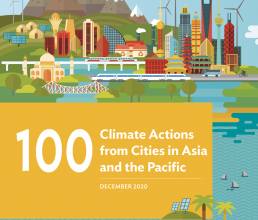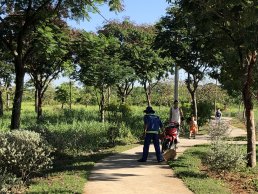First appeared in

Asian Development Bank
100 Climate Actions from Cities in Asia and the Pacific
Several cities in Viet Nam have committed to a development approach that works with the surrounding environment to respond to challenges related to urban growth and climate change.
Several cities in Viet Nam have committed to a development approach that works with the surrounding environment to respond to challenges related to urban growth and climate change.
Viet Nam’s largest urban center, Ho Chi Minh, and the secondary cities of Vinh Yen and Hue are set to adopt water sensitive urban design (WSUD) that integrates water management with urban development and the built environment.
WSUD’s flexible nature is of particular use in this multi-city context , as individual components can be optimized for each community. For example, city planners in Ho Chi Minh are exploring options to mitigate flood risks by integrating floodplains and sloping topography in the large Go Vap Cultural Park. On a smaller scale, Hue City is experimenting with new types of edge treatments and WSUD tools to improve water quality along the Lap River and create a green community space.
$4M
INVESTMENT IN CLIMATE RESILIENCE
INVESTMENT IN CLIMATE RESILIENCE
Based on the project experience, these climate resilient development approaches will be expanded to include other Vietnamese cities in the future.
Funding is provided by ADB’s Urban Climate Change Resilience Trust Fund.

Green and blue measures, such as rain gardens, artificial lakes, and green roofs, will be used to complement or replace existing grey infrastructure (photo by Satoshi Ishii for ADB).
The Challenge
Growing cities in Viet Nam are often exposed to environmental degradation and are vulnerable to climate change-related disasters like flooding.
Co-Benefits
Environment WSUD approaches can improve water quality, prevent soil erosion and sedimentation, contribute to carbon sequestration, and increase biodiversity.
Social By integrating natural components with the built city environment, WSUD will create a myriad of recreational use opportunities for communities.

